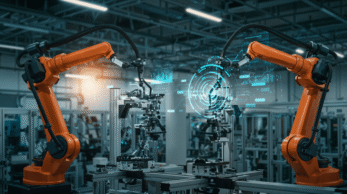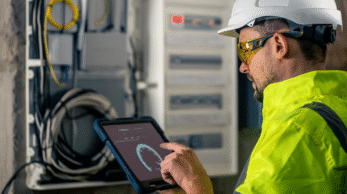Comparison of the two maintenance approaches
Here’s a synthesis of the two types of maintenance, highlighting the key differences between preventive and predictive maintenance:
|
|
Preventive |
Predictive |
|
Definition |
Regular interventions based on time or usage to prevent failures. |
Uses advanced technologies to foresee failures before they occur. |
|
Scheduling |
Highly planned, periodic. |
Based on real-time data analysis. |
|
Technology |
Management systems (ex: CMMS). |
Dependent on AI, IoT, predictive analytics. |
|
Costs |
Moderate to high. Requires investments in management systems. |
Very high. Requires investments in cutting-edge technologies. |
|
Operational Impact |
Reduces unscheduled downtime, improves production continuity. |
Minimizes interruptions, maximizes efficiency. |
|
Adaptability |
Less flexible, some scheduled interventions do not consider the current conditions of the equipment. |
Extremely adaptable, optimizing interventions based on predictions from actual data. |
|
Training Requirements |
Regular training on procedures and systems. |
Advanced skills in data analysis. |
|
Ideal Use |
Environments with predictable equipment wear. |
High-technology sectors. |
Preventive maintenance: planning to anticipate
Scheduling maintenance interventions

Preventive maintenance is also enhanced by the use of modern technologies like Computerized Maintenance Management Systems (CMMS), which centralize equipment data and automate the scheduling of maintenance. These systems enable accurate tracking and facilitate intervention report generation, contributing to better traceability and equipment safety.
Heavy industries such as manufacturing, aerospace, and automotive greatly benefit from preventive maintenance. By anticipating failures before they occur, these industries manage to maintain continuous production without unexpected interruptions, which is essential for keeping tight production schedules and maintaining product quality.
Tangible benefits and limitations of preventive maintenance
The benefits of preventive maintenance include marked improvement in equipment reliability, a reduction in unscheduled downtime, and prolonged machine lifespan. However, this method could lead to costs related to implementing a CMMS and the necessary training for maintenance teams. Moreover, inadequate planning or poor execution of planned tasks may not yield the expected benefits.
Overall, preventive maintenance is an essential component of asset management strategy in many industries, enabling maximized equipment availability and performance while minimizing failure costs. Its success, however, depends on careful implementation and rigorous planning.
Predictive Maintenance: The Future of Forecasting
Technical explanation and implementation

Predictive maintenance employs sensors and the Internet of Things (IoT) to gather varied data regarding machine operation, such as vibration, temperature, pressure, and many other parameters. This data is then analyzed by sophisticated algorithms to detect anomalies or early signs of failure, enabling targeted interventions before the equipment experiences a breakdown. For example, in the energy sector, wind turbines are fitted with sensors that constantly monitor their condition, allowing for predictive maintenance that optimizes energy production and reduces unscheduled downtime.
Economic benefits and operational efficiency
One of the principal advantages of predictive maintenance is its ability to significantly reduce maintenance costs by avoiding expensive repairs and prolonged production stops. It also improves operational efficiency by optimizing the lifespan of equipment and reducing expenses related to spare parts and energy. However, implementing this strategy requires a substantial initial investment in cutting-edge technologies and an advanced analytical competency, which can be a barrier for some businesses that are less technologically equipped.
How to choose between preventive and predictive maintenance?
Predictive maintenance, on the other hand, represents a synthesis between proactive and reactive intervention. Employing advanced technologies such as AI and the Internet of Things, this strategy enables anticipation of failures before their occurrence. Benefits include reduced downtime and fewer, more targeted interventions, thus optimizing maintenance costs and equipment lifespan. Nonetheless, the initial cost of technologies and the expertise required to analyze the gathered data can be adoption barriers for some businesses.
To choose the best maintenance strategy, managers must evaluate not only the financial costs of each method but also their impact on production and equipment sustainability. The decision must take into account the frequency of failures, the criticality of equipment for company operations, and the ability to invest in advanced technologies.
Effective maintenance management requires continuous analysis and adaptation to changes in operational and technological conditions, ensuring the stability and efficiency of industrial operations.
The choice between preventive and predictive maintenance isn’t just a simple technical decision; it’s a strategic reflection that considers the nature of the equipment, production goals, and available resources. By carefully evaluating the benefits and costs of each approach, maintenance managers can optimize operations, prolong equipment lifespan, and above all, prevent catastrophic failures before they occur. The key lies in a judicious combination of forecasting and anticipation, tailored to the unique challenges and opportunities of each industrial environment.




